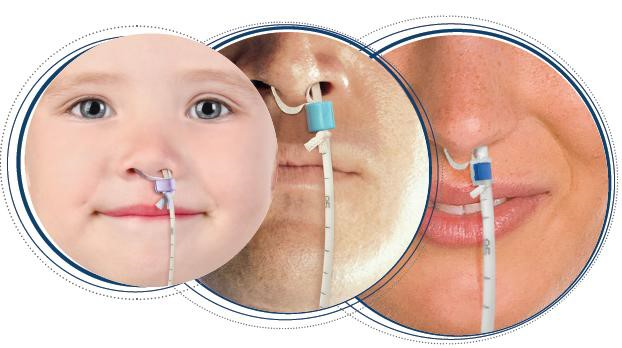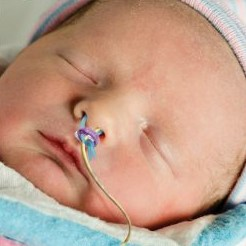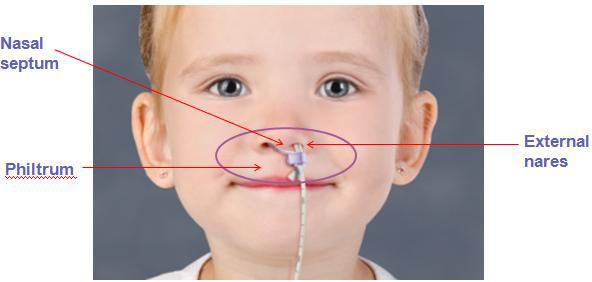Nasal bridle tube retaining system
What is a nasal tube retaining system?
A nasal tube retaining system is a long string of either silicone or cotton inserted through one side of the nose and looped around a bone in the back of the nose. This creates a bridle with the string. The string is attached with a clip to the nasal tube. This is an effective method to keep tubes in place. However, use of a bridle does not guarantee proper tube position will be maintained. Proper position of nasal tube must be verified.
The bridle is not painful and should not harm your child’s nose. If your child’s tube is pulled on, it will feel uncomfortable. The tube is designed to slip out before the nose is hurt. Even so, your child should not touch or pull on the nasal tube or string.
Nasal bridle information
The size nasal bridle placed is ___________French.
Nasal bridle was placed on ___________________ and is due to be changed on/before__in 30 days___.
Nasal tube is positioned at ____________ cm mark.
Proper placement of nasal bridle system
- The clip should be about 0.5 cm away from your child’s nose. See Figure 1.
- There should be no twisting or tightness of the tube or bridle string.
- Pressure injuries can develop within hours if the clip or tube is pressed too tightly against the skin.


Figure 1. Proper placement of nasal bridle device.
Images courtesy of Applied Medical Technology.
Care of the nasal bridle system
- Wash daily with warm water.
- Apply no-sting skin preparation every Monday, Wednesday, and Friday to the skin areas between bottom of nose and top of upper lip. See Figure 2.

Figure 2. Areas for application of no-sting skin preparation.
- Check the clip for signs of damage or not holding the tube tightly. If damaged, or tube is not in the original position, call your clinic.
- Check the clip to make sure it is not too tight against the skin. The clip should be close to the nose (about 0.5 cm away). The clip should NOT touch the nose, or put pressure on any skin area. See Figure 1.
- Nasal bridle system should be changed every 30 days, and when the tube is changed.
If you notice any of the following signs, call your provider immediately:
- Bloody nose
- Visible sores
- Increased or discolored fluid coming out of your child’s nose
- Reports of headache or pain in the nose
- Tube or clip not in original position
Feeding Tube Discharge Planning (to be completed before discharge)
Provider responsible for outpatient tube management ______________________________________
Home tube plan
Tube type _________
Tube size _________
Measurement from nares to end of tube: _________
Plan for tube replacement (recommend replacing nasal bridle when tube is replaced)
Scheduled replacement
___ Tube and nasal bridle replacement by ___________________ on _____ (recommend 30 days)
___ Future order placed for replacement in _____ (weeks/months)
Unscheduled replacement
Contact ______________________________________________________________________________________
Replacement plan
Tube can be replaced within _________hours
Maximum length of time child can be without feedings: _________hours
NJ : ___ contact fluoroscopy at __________________________________________ to schedule tube replacement
NG: ___ contact ______________ to have NG replaced by ____________________ at location______________
Nasal bridle to be replaced by ___________________________
Transition support
___ Child should be seen by provider managing tube in ______ weeks
___ (#) skilled nurse home visits to verify tube placement, bridle security, nares/skin condition with nasal bridle
Contact _____________________________________ at____________________ for tube management questions
Contact nursing agency ________________________ at____________________ for nursing assessment questions
Questions?
This sheet is not specific to your child, but provides general information. If you have any questions, call your clinic.
Reviewed 1/21
This page is not specific to your child, but provides general information on the topic above. If you have any questions, please call your clinic. For more reading material about this and other health topics, please call or visit Children's Minnesota Family Resource Center library, or visit www.childrensmn.org/educationmaterials.
© 2024 Children's Minnesota
